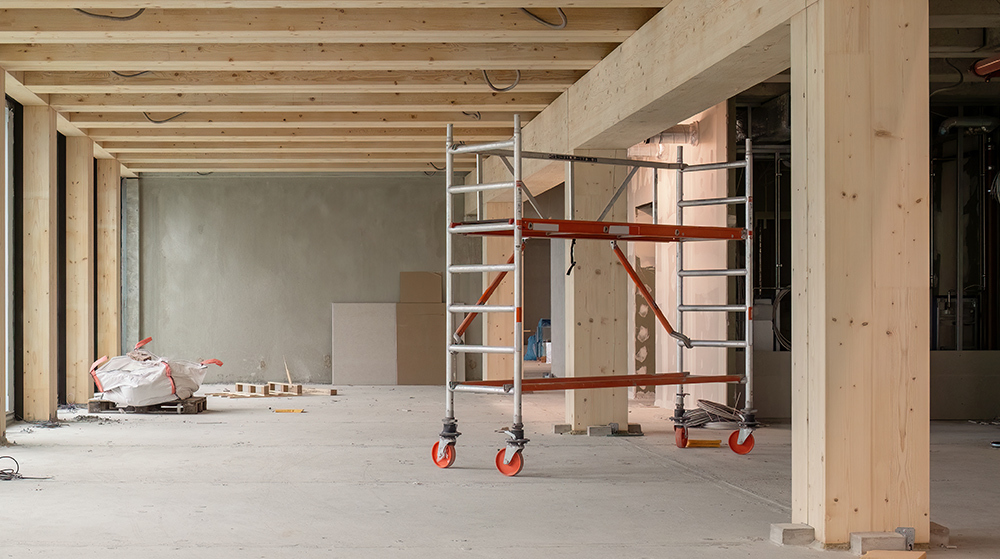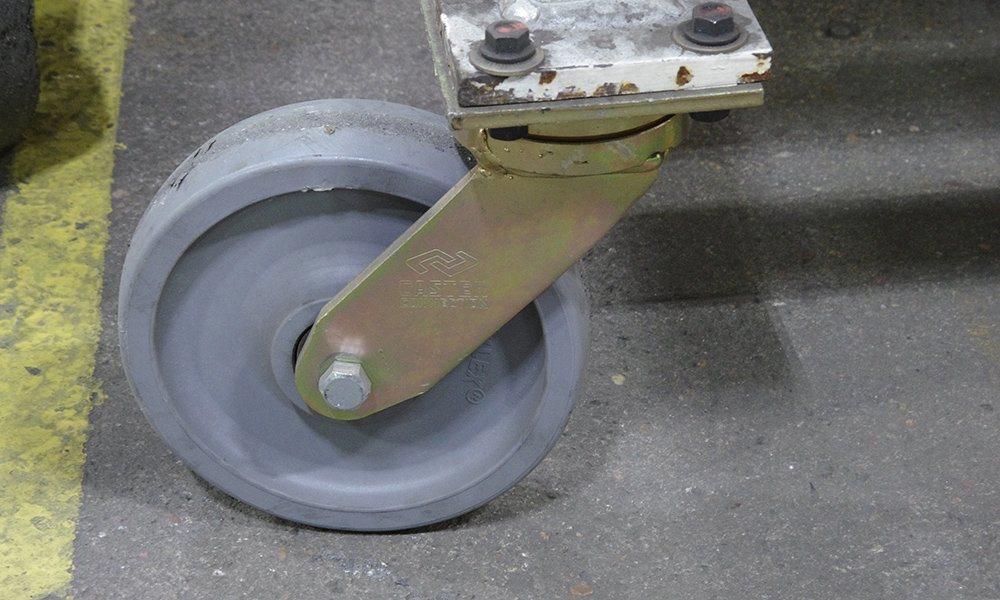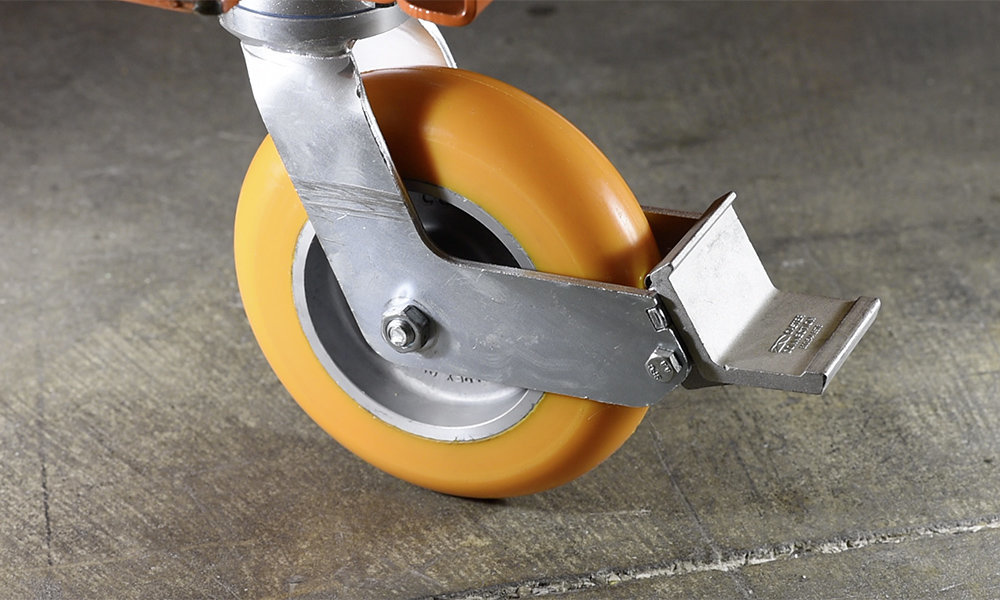How Casters Improve Efficiency in Pre-Fab Housing and Manufacturing

Pre-fabricated housing is redefining the construction industry, offering faster, more efficient alternatives to traditional homebuilding. Speed, precision, and flexibility are the name of the game—but what makes fast, seamless production and assembly possible behind the scenes?
While cranes, transport trucks, and skilled labor play visible roles, casters are the quiet force that powers mobility at every stage. From manufacturing floors to final on-site adjustments, the right caster solutions drive faster workflows, better modular flexibility, reduced labor needs, and significant cost savings.

In this blog, we’ll dive into how casters enable the efficiency the pre-fab housing industry depends on—and why upgrading your mobility solutions can give you a critical competitive edge.
The Rise of Pre-Fab Housing and the Need for Speed
Pre-fabricated housing is changing how the construction industry approaches time, labor, and cost. With increasing demand for faster build cycles and more efficient processes, pre-fab models offer a smart solution. Speed and efficiency in pre-fab construction don’t come automatically with modular design. They depend on how easily materials, modules, and tools can move through each phase—from fabrication to final installation—without delays, damage, or disruption.
Industry Growth

Driven by rising housing demand, skilled labor shortages, and mounting pressure to reduce costs, pre-fabricated and modular homes are growing in popularity. Builders and developers are embracing the model because it allows them to deliver quality housing faster and more consistently.
Production Challenges

Despite these advantages, manufacturing and assembling pre-fab homes presents unique logistical challenges:
-
Moving large panels and modules through factories without damaging finishes
-
Staging and transporting heavy sections efficiently between workstations
-
Meeting tight on-site schedules for delivery, crane placement, and final assembly
If material handling is slow or inefficient, even the most well-planned modular project can fall behind schedule. This undermines one of the most important benefits of the pre-fab approach: speed.
Why Mobility Is Critical

Time saved during production and on the job site has a direct impact on profit margins, client satisfaction, and overall project capacity. Mobility solutions such as casters help enable that speed by improving workflow, reducing delays, and streamlining the movement of materials.
The Role of Casters in Pre-Fab Housing Production and Assembly
In both the factory and the field, mobility is a key driver of efficiency in pre-fab housing projects. The ability to move large components, tools, and staging equipment quickly and safely plays a direct role in meeting deadlines, improving workflow, and reducing labor demands. Casters provide the flexibility and control that fast-paced modular construction environments require.

On the Factory Floor
Inside manufacturing facilities, casters are essential for:
-
Moving wall panels, roof trusses, and floor sections safely between workstations
-
Adjusting staging areas and production lines as needed to fit shifting schedules or accommodate larger builds
-
Reducing reliance on forklifts or cranes for short-distance movement, which saves time and improves worker safety
Smooth and controlled movement helps keep production on track by eliminating bottlenecks and allowing teams to maintain tight build timelines.
On the Construction Site
Casters continue to provide value after prefab modules arrive at the site:
-
Precision staging is critical when positioning modules for crane lifts
-
Keeping tools, platforms, and prefab materials close to the work zone improves job site efficiency
-
Making small adjustments during final assembly is faster and safer with mobile systems, which helps reduce setup time
Casters make it easier to manage both large-scale moves and fine-tuned adjustments, allowing teams to keep projects moving forward without unnecessary delays.
How Casters Drive Efficiency in Every Stage of Pre-Fab Construction
Speed and efficiency in pre-fab housing depend on more than smart designs and streamlined workflows. They also hinge on how easily materials and components move through each stage of production and assembly. Casters are a simple yet powerful tool that can unlock major gains in productivity, cost savings, and workplace safety. Here are five key ways they make a measurable impact.

Faster Production and Assembly Times
Casters reduce the need for manual handling and allow heavy materials to be moved quickly and safely. This keeps production flowing smoothly and helps teams finish assemblies faster, even under tight deadlines.

Reduced Labor Costs
With mobile systems in place, fewer workers are needed to transport large modules or reposition staging equipment. Casters also reduce reliance on forklifts and cranes, lowering rental costs and cutting down on wait times for heavy machinery.

Improved Flexibility and Adaptability
Pre-fab environments often shift quickly to meet demand. Casters make it easy to reconfigure factory layouts, adjust workstations, and pivot when schedules or priorities change. This flexibility keeps downtime to a minimum.

Minimized Damage Risk
Casters with smooth rolling and shock-absorbing features help protect finished materials like drywall panels, glass, and flooring during transport. This leads to fewer damaged components, less rework, and higher-quality results.

Enhanced Worker Safety
By reducing the need for lifting and awkward manual movement, casters lower the risk of injuries on the job. A safer work environment also tends to be more efficient, as crews can focus on completing tasks without unnecessary strain or delays.
Selecting Casters for Pre-Fab Housing Projects

The demands of pre-fab construction require casters that are built for both performance and protection. Choosing the right caster features can make a measurable difference in efficiency, safety, and material integrity—on the factory floor and at the job site.
Load Capacity for Structural Components
Pre-fab modules and large wall panels can be extremely heavy. Casters must be rated to support the full weight of these loads without risk of failure, especially during movement or staging.

Non-Marking Wheels for Finished Surfaces
Protecting surfaces like finished flooring, drywall panels, or decorative elements is critical. Casters with non-marking wheels help prevent scratches, scuffs, and other avoidable damage during transport.

Shock Absorption for Material Protection
Transporting components over uneven floors or through busy production areas can introduce vibration and impact. Shock-absorbing casters help protect sensitive materials by minimizing the effects of bumps and jolts.

Smooth Rolling and Maneuverability in Tight Spaces
In both factories and job sites, space can be limited. Casters should offer smooth, low-resistance movement with excellent turning capability, making it easier to move heavy loads precisely even in constrained environments.

Weather and Corrosion Resistance for Outdoor Use
Modules are often staged or adjusted outdoors, where exposure to moisture, dust, and temperature swings is unavoidable. Casters with corrosion-resistant materials and sealed components ensure consistent performance in all weather conditions.

Locking Mechanisms for Stability During Setup
Once modules or materials are in position, they need to stay put. Casters with reliable locking systems prevent unwanted movement during critical operations like assembly, crane lifts, or final adjustments.

Real-World Example: How Casters Streamline Pre-Fab Projects
One leading pre-fab housing manufacturer recently upgraded to heavy-duty maintenance-free casters for material staging and module transport.
The results were dramatic:
• 40% faster staging and setup times in their primary facility.
• Improved flexibility, allowing them to adjust production lines and ramp up output during peak periods.
• Reduced material damage thanks to better shock absorption and smoother rolling mobility.
By optimizing something as seemingly small as their caster selection, the company gained a major strategic advantage—delivering projects faster, reducing labor costs, and boosting customer satisfaction.

The Right Mobility Makes All the Difference
In the fast-paced world of pre-fab housing, speed is not just about how quickly a home is delivered. It is about every phase of the process, from the first movement of a wall panel to the final adjustment on the job site.
Casters play a critical role in enabling that speed. They provide the mobility, flexibility, and control needed to meet tight deadlines, reduce labor and equipment costs, and maintain high standards of quality. For manufacturers and builders looking to stay competitive, choosing the right caster solutions is not a minor detail. It is a strategic decision that can shape the success of every project.
Ready to move faster, safer, and smarter in your pre-fab housing operations?
